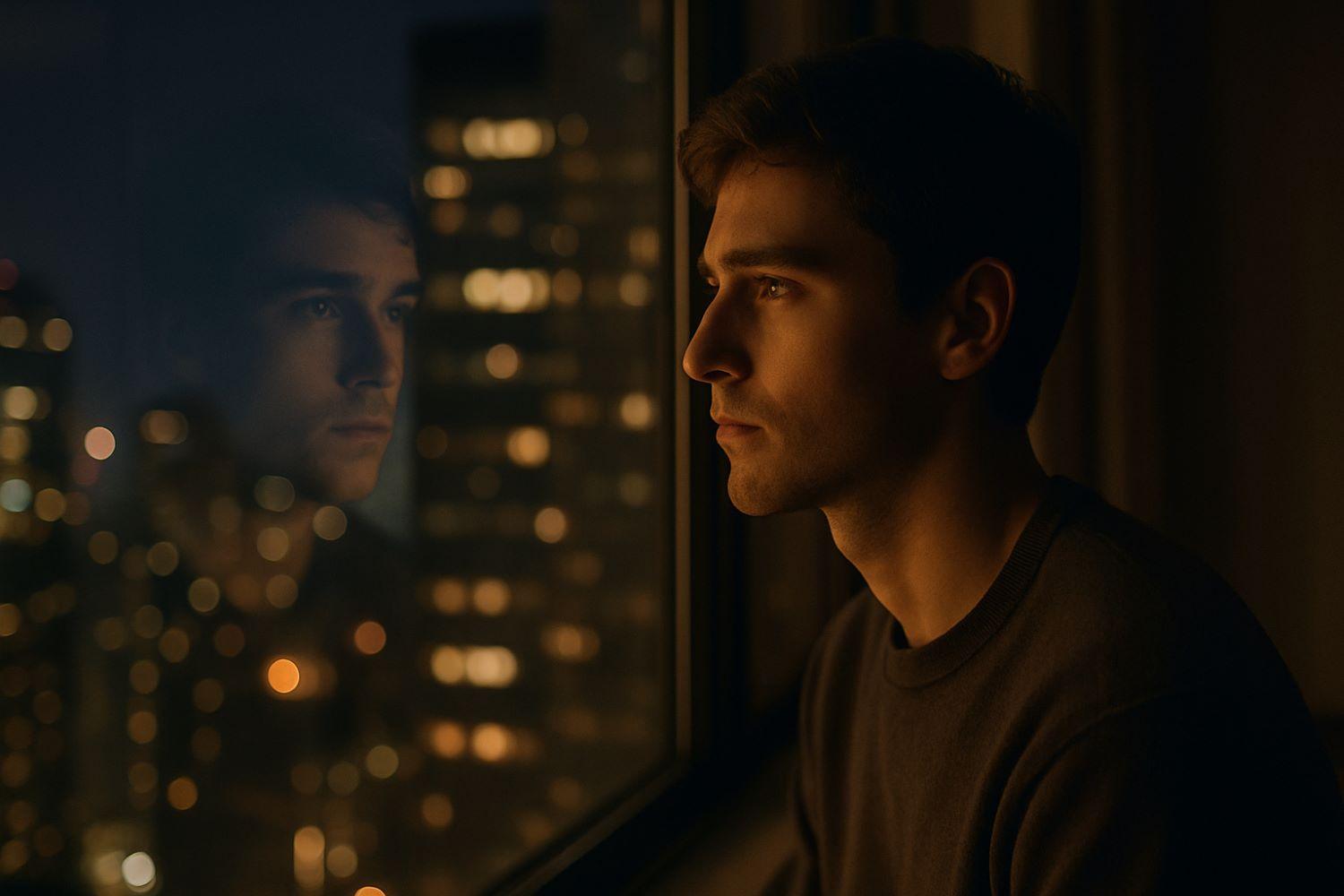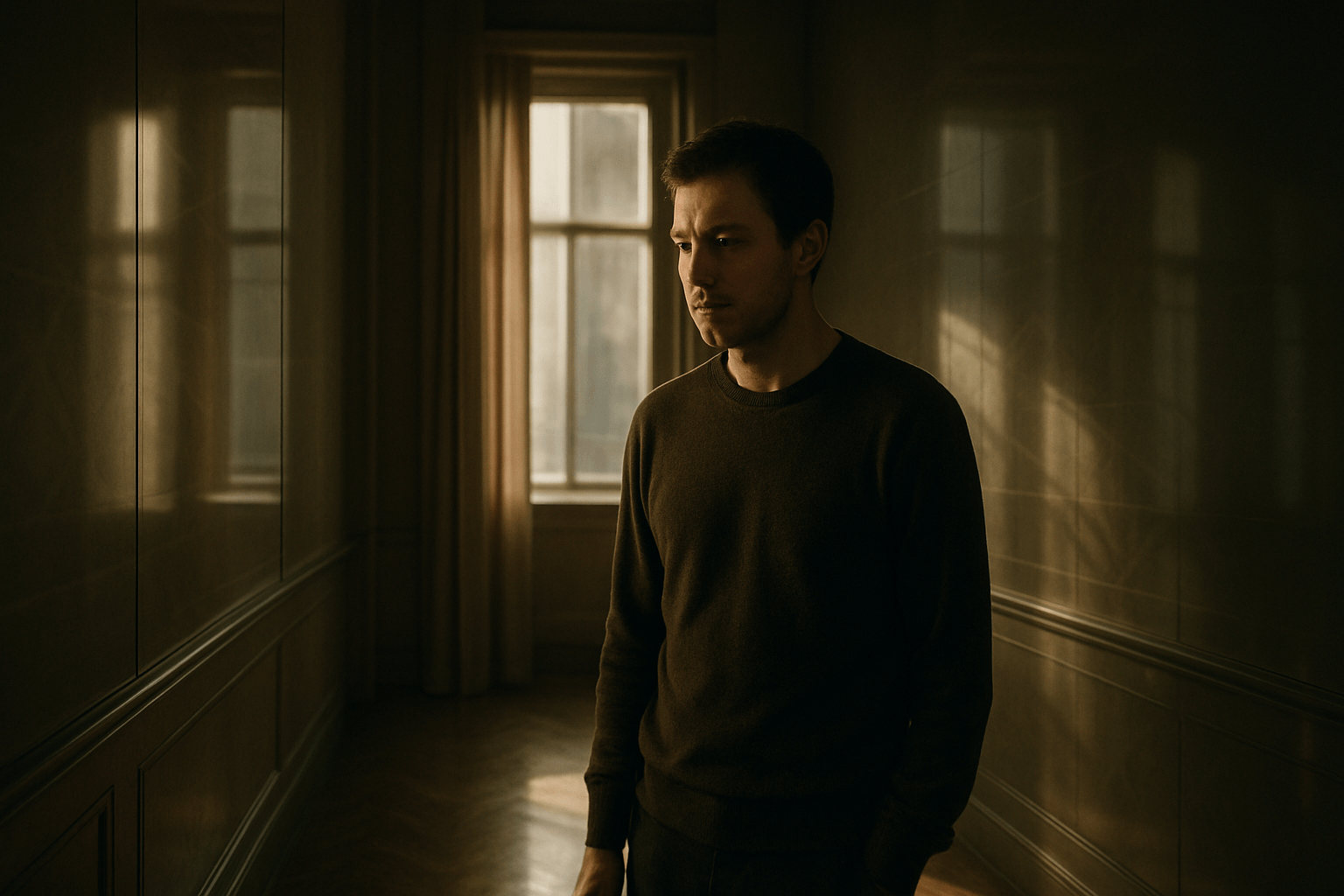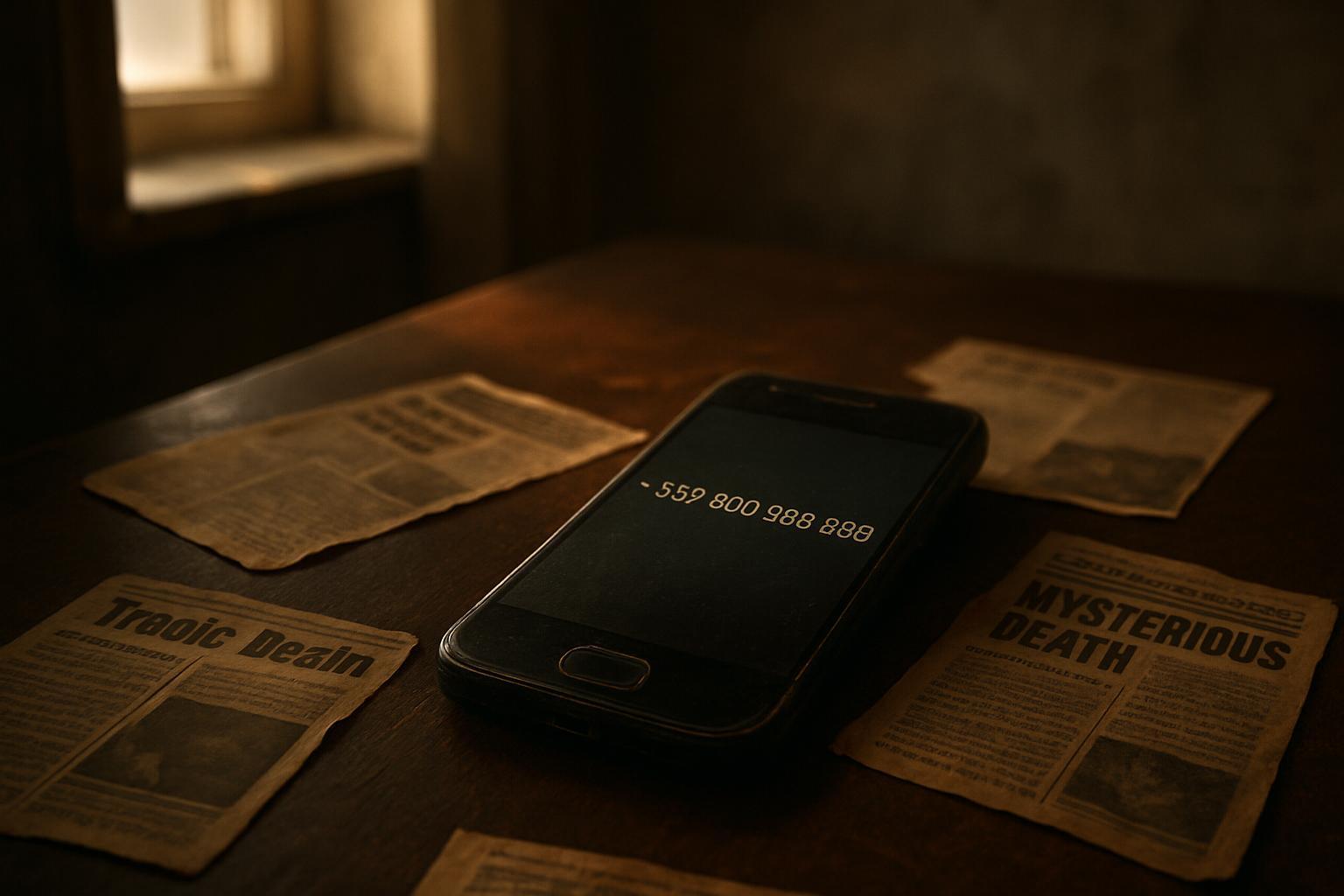Have you ever walked into a room and felt, almost eerily, like you’ve been there before? This odd sensation, called déjà vu, has puzzled people for centuries. Some scientists think it’s just a trick of the brain. Others, however, ask a wild question: Could déjà vu be a glitch in a simulated universe?
Understanding Déjà Vu: The Experience Everyone Knows
Déjà vu is French for “already seen.” It’s that sudden, fleeting sense that you’ve experienced something before. Maybe it happens while you’re listening to a song, meeting someone for the first time, or taking a new route home. Around two-thirds of people report having déjà vu at least once in their life, and for some, it happens several times a year.
The feeling is usually brief. It fades as quickly as it comes, leaving you puzzled and sometimes a bit spooked. Most people are healthy when this happens, but déjà vu is also linked to certain types of epilepsy. This rare connection makes scientists believe it’s rooted in our brains, not the world around us. Despite years of research, no one knows exactly why déjà vu happens.
Common Theories from Science
Over the past century, experts have come up with several ideas to explain déjà vu:
- Memory Overlap: Some theories claim déjà vu happens when your brain matches what’s happening now with a similar but forgotten memory. The match feels strong enough that your mind rings an “I’ve been here” alarm.
- Split Perception: Another idea is that you see something twice in quick succession. The first glimpse is too short to register but enough to plant a sense of familiarity.
- Brain Delay: Sometimes the brain’s message from the eyes gets processed twice, with a tiny delay. The second time, it feels familiar, as if you remember it from before.
- Small Seizures: In people with temporal lobe epilepsy, déjà vu can happen right before a seizure. This link helped scientists see that the sensation starts in specific brain areas involved with memory.
While science focuses on the mind, popular culture also plays a role in shaping how we see déjà vu. Films like The Matrix made déjà vu famous as a sign that something’s off in reality, sparking talk of hidden codes and simulations.

The Simulation Hypothesis: Are We Living in a Computer?
Now, let’s step back and look at the grander idea—the simulation hypothesis. This is the claim that we might all be living inside a vast computer simulation, created by advanced beings or even future humans. Think of a high-tech version of a video game, but so detailed that its characters (us) are convinced it’s real.
Famous Supporters and Arguments
This idea is not just science fiction. Some respected thinkers, like Oxford philosopher Nick Bostrom, suggest it’s statistically likely that advanced civilizations could build supercomputers powerful enough to simulate entire worlds. If they can, and if they want to, then it’s possible we are already inside one of them.
Elon Musk, CEO of SpaceX and Tesla, famously said that the odds we’re in “base reality” are billions to one against. He reasons that as computer graphics get lifelike, there’s little to stop future societies from simulating people and worlds. Eventually, the number of simulated worlds could far outstrip the original.
Many CEOs, especially in the tech world, seem especially captivated by simulation theory. As explored in our previous story, these leaders are often on the front lines of digital innovation and are quick to recognize the possibilities—and implications—of simulated realities. The theory appeals to their problem-solving mindset and the constant drive to push boundaries, both in business and in understanding existence itself. For some, it even offers a framework to consider the future of artificial intelligence and the next wave of human experience.
But is there any proof? While there’s no direct evidence that we’re in a simulation, some physicists have pointed out odd features in physics. For example, the universe works on fixed rules, much like the code in a program. Quantum physics, with its uncertainty and randomness, sometimes feels like a game’s engine optimizing performance behind the scenes.
Déjà Vu as a “Glitch” in the Simulation
Given the simulation theory, some people wonder if déjà vu signals a fault in the system—a “glitch in the Matrix,” as the movie puts it. Maybe you spot a small bug when the simulation copies or replays a bit of your experience. Perhaps the computer lags, or you see something before it’s rendered fully. Let’s look at why this idea has captured so many imaginations.
The Pull of the Glitch Theory
For many, déjà vu feels uncanny because it’s hard to explain. Unlike memories, which you can tie to past events, déjà vu is slippery. The idea that it might be a system error explains the suddenness, the brief flashing sense of reliving a moment, and the way it fades when you try to pin it down. This is like a video game hiccuping—your screen stutters, or an element pops in twice, then the game goes on as normal.
People who believe in the simulation theory point to other oddities too:
- Repeating Patterns: Maybe you notice the same numbers, places, or people cropping up again and again, as if the simulation recycles assets.
- Mistaken Memories: Mandela Effects—when groups “remember” a fact differently from reality—could be bugs in programming or updates to the code.
- Physical Constants: Some physical numbers, such as the speed of light or electron mass, never seem to change. In a code-based world, these might be set as standard variables.
But does the “glitch” theory actually make sense, or is it just a way for us to make sense of a strange brain event?
Examining the Evidence: Brain Science Versus Simulation
Let’s look at the strengths and weaknesses of each approach. Science has mapped déjà vu to real brain events. At the same time, curiosity grows about whether our brains could be detecting something bigger—an error in reality itself.
Support from Neuroscience
Brain studies show that déjà vu happens when specific areas—especially the temporal lobes—get triggered in unusual ways. During some epilepsy cases, doctors can even cause déjà vu by gentle electrical stimulation of these regions. Further, advanced scans reveal that déjà vu lights up memory areas, especially where the brain decides if you’ve seen something before.
Recent research supports this view. For example, scientists have found that electrical stimulation of the insular cortex in epilepsy patients can trigger déjà vu experiences, showing just how closely linked these sensations are to certain brain area. Brain imaging studies also show that during déjà vu, regions involved in resolving memory conflicts—like the anterior cingulate cortex and medial prefrontal cortex—become more active. These findings support the idea that déjà vu is the brain’s version of a hiccup. When memory checks run slightly out of sync, your mind gets a strong hit of familiarity, even though it can’t tie it to past events. Many scientists trust these findings, since they offer repeatable, testable results.
Could a Simulation Be Detectable?
Supporters of the simulation hypothesis argue that if we live in a simulation, glitches may show up as odd patterns we can’t fully explain. Quantum weirdness, déjà vu, or rare alignments in events might be subtle signs that the program isn’t perfect. They point out:
- Quantum computers sometimes return the same rare results, as if the code repeats itself.
- People experience reality shifts, such as the Mandela Effect, that seem impossible if everything is working normally.
- Certain mathematical patterns appear again and again in nature, which could hint at underlying code.
However, most scientists challenge these claims. No one has found a bug, typo, or error in physical laws that proves code is running things behind the scenes. Patterns, after all, are a part of nature and can be explained by basic physics or psychology.
Are Brain Errors More Likely?
Most psychologists believe that déjà vu is better explained by memory oddities. The brain process works fast, but sometimes a small lag leads to mistakes in recognizing new from familiar. Picture opening two tabs with the same web page—one loads a bit slower, so you get the sense you’ve seen the content before.
Another point is that déjà vu is more common with stress, tiredness, or in young adults—times when the brain is more likely to misfire. Older adults often have fewer episodes, which fits with memory pathways getting less flexible with age.
Why We Want to Believe in Glitches
Even with brain science offering strong answers, many people still find the simulation idea intoxicating. Why is that?
The Allure of Mystery
Humans love mysteries. When something feels odd or can’t be explained right away, we dream up big solutions. The simulation idea offers a ready story: If déjà vu feels fake, maybe reality is too. It lets us imagine there’s something beyond the ordinary, or that we have spotted a gap in the system.
Comfort and Control
For some, believing in a simulation offers comfort. If life is a program, perhaps someone is watching over us or there’s a bigger meaning. It can even make hard times easier to bear—maybe suffering is less real, or failures will reset in the next round.
On the flip side, the simulation idea can spark anxiety or paranoia for others. If what we see isn’t “real,” do our choices matter? This mirrors worries in philosophy dating back to Plato’s cave, but updated for the computer age.

Déjà Vu in Art, Film, and Culture
The sense of déjà vu is such a potent, strange feeling that it shows up often in books, TV, and film. Sometimes, it’s used to hint at realities behind reality itself. For example, in The Matrix, déjà vu signals that the program has changed something in the world. Dark City and Inception play similar games with memory and repeated moments.
Writers like Philip K. Dick, who inspired Blade Runner and Total Recall, loved twisting reality in this way. He wrote about characters discovering layers within layers—perfect ground for both simulation and déjà vu. By making us question what’s real, stories remind us how quickly our minds can be tricked by a simple feeling.
Déjà Vu and the Mandela Effect: Related Glitches?
Some people link déjà vu to the Mandela Effect, the strange memory mismatches where large groups misremember facts (like “Berenstain Bears” vs. “Berenstein Bears”). Both feel like reality is out of step. If you believe in the simulation theory, either could be the sign of an edit or rollback in the program. Most scientists shrug and point to the brain’s quirks and common memory errors, but the coincidences still fascinate many.
Testing the Simulation: Is It Possible?
If we want to know if déjà vu points to a simulated world, can we test for it? Some physicists suggest ways we might spot “code” in the environment:
- Look for limits on physics, like a finite speed of light or smallest distance (called the Planck length) that could be a “pixel size” for space.
- Test whether cosmic rays, which arrive from deep space, hit Earth at set angles—like in a grid—suggesting a digital world.
- Search for repeating patterns or “compression artifacts” in mathematical constants.
So far, these tests haven’t found proof. No one has pinned down evidence of artificial boundaries, repeated errors, or hard-coded bugs in nature. Déjà vu still remains on the list of experiences with curious, but likely natural, explanations.
The Philosophy of Doubt: Are We Asking the Right Question?
Asking if déjà vu is a glitch in a simulated universe pushes us to ponder the nature of reality itself. From ancient philosophers to today’s AI researchers, everyone grapples with how we know the world is real. Descartes wondered if an evil demon could trick us about everything we see or feel. Today, the demon is replaced by a powerful computer, but the doubt remains.
For now, the strongest clues point not to computer errors, but to our own marvelous, sometimes faulty, brains. Still, keeping an open mind helps science grow. Today’s mysteries sometimes become tomorrow’s breakthroughs.
How to Think About Your Déjà Vu Experiences
Next time déjà vu flashes in your mind, don’t rush to dismiss or fear it. Your brain is doing something amazing—combining memory, emotion, and senses at lightning speed. Under stress or in new places, these checks are even more likely to “misfire,” strengthening that odd feeling of reliving the present.
But if dreaming of code and computer glitches adds a spark to your day, enjoy it. The big mysteries—why we remember, forget, or feel out of step—keep us curious. Whether the answer lies in your neurons or the universe’s hidden code, the wonder is real, even if the event is not.
Déjà vu continues to bridge the gap between hard science and wild imagination. No matter where the truth lies, those eerie moments remind us how much there is left to learn about our minds—and perhaps reality itself.




